3.14.17 Spring to Mind
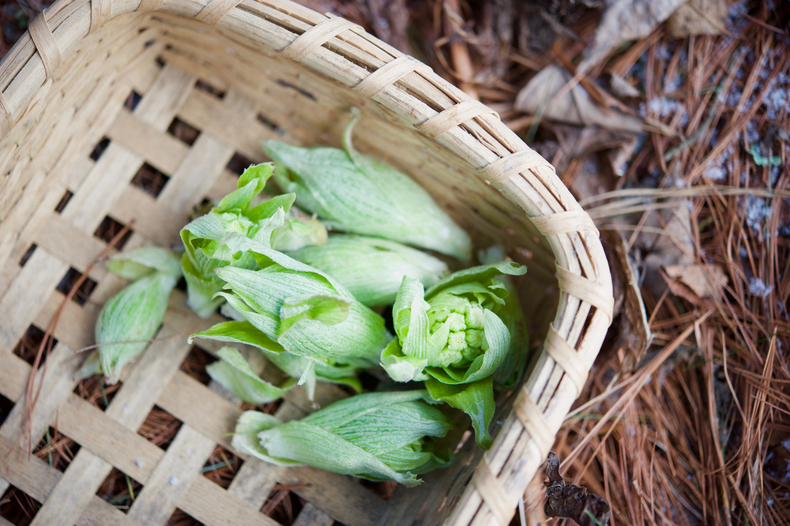
As I write this, I can hear the steady thud of logs being stacked in our screened-in porch. We're expecting a major snowstorm in these parts and that requires preparation. With a fire in the hearth and soup on the stove, coziness is assured. G does firewood; I do soup. Between us, we get it done. A few warmer days last week and, despite an ensuing freeze, the butterburs emerged from beneath their blanket of pine needles. These common plants, known as petasites, belong to a genus of the sunflower family that also includes coltsfoots. Perennials with thick, creeping underground rhizomes, they spread over the years and their large, rhubarb-like leaves are fodder for slugs in the summer. But their beautiful, cold-hardy buds are a late-winter/early-spring delicacy in Japan, where Petasites japonicus, also known as fuki, grows like a weed. I was lucky enough to receive some of these plants a few years ago from my Japanese friend Tomo and they have adapted well to my garden (lots of shade and pine).
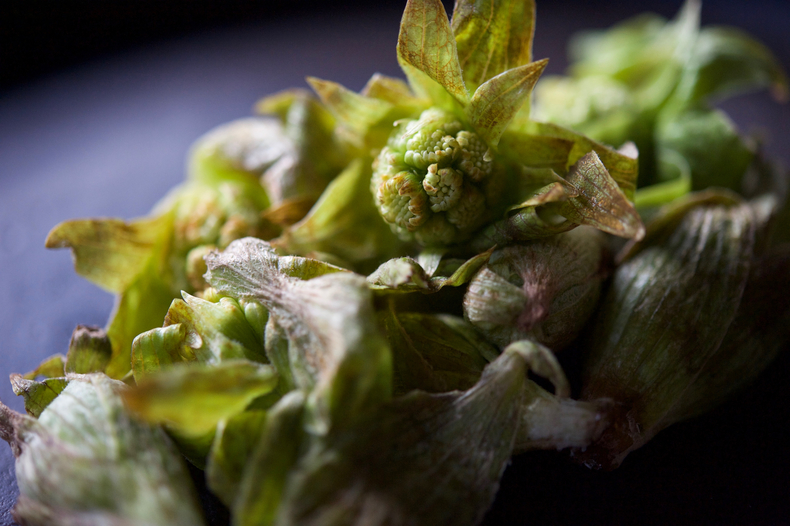
Harbingers of spring, butterbur's tender buds, or fukinoto, have the bitter astringency of many of the season's early greens. Because of this, the Japanese traditionally soak them in water and/or pre-treat them with ash or baking soda to remove any harshness. The buds are fried as is for tempura or soaked or blanched, then chopped and stir-fried with miso to make a kind of relish eaten with hot rice.
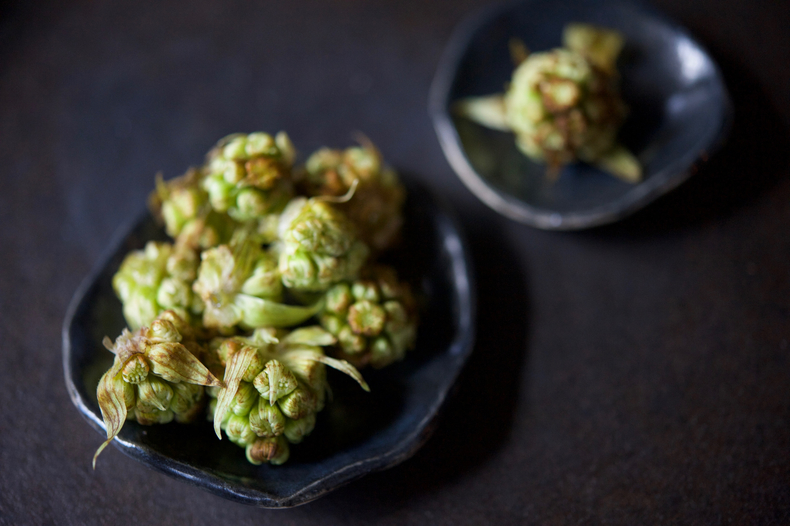
My friend Prairie, who lives between Maine and Japan, writes so eloquently about all these uniquely Japanese culinary techniques and traditions. (Read this for an authentic perspective on fukinoto.) It was she who inspired me to look for the buds at the tail end of winter and make something delicious from them. This is the first year I was not too late!
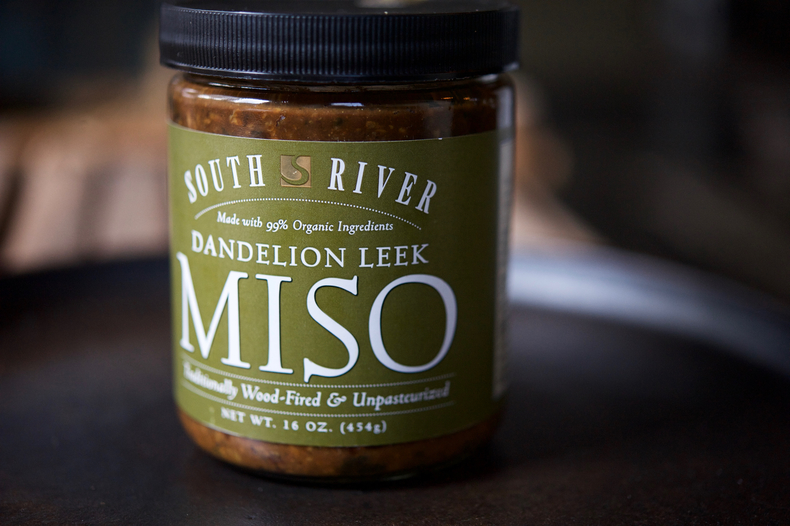
I looked at a few different recipes for fukinoto miso online and landed on one from Elizabeth Andoh, an American who has lived in Japan for 50 years and authored several award-winning cookbooks. I decided to use this dandelion-leek miso I had on hand as the base. If you have not yet tried miso from South River, I highly recommend it. I always have several of their flavors in my fridge. Their miso tamari is also delicious.
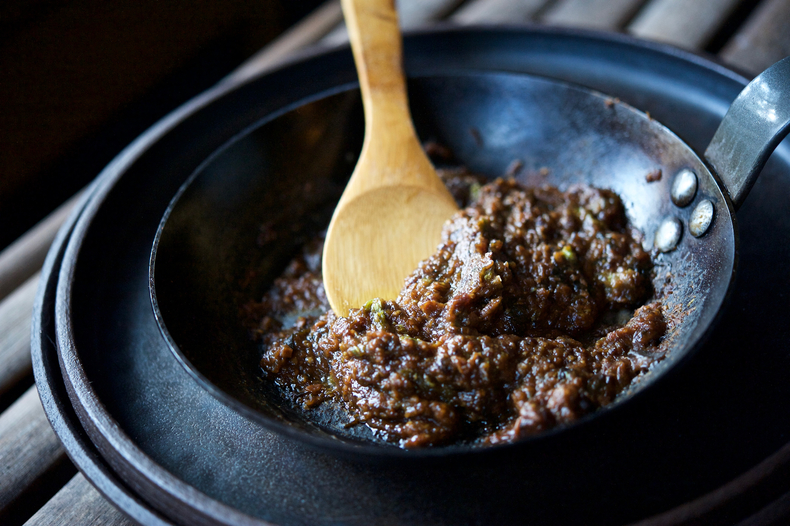
After mincing and soaking the butterbur buds, you squeeze out the excess water and sauté them in a little sesame oil. Then you add a paste of miso that has been cooked down with small amounts of sake, sugar and water. (Are you admiring my carbon-steel pan? You've got to get yourself a few. They are lighter than cast-iron or copper but conduct heat just as well! Read about them here; order one here.)
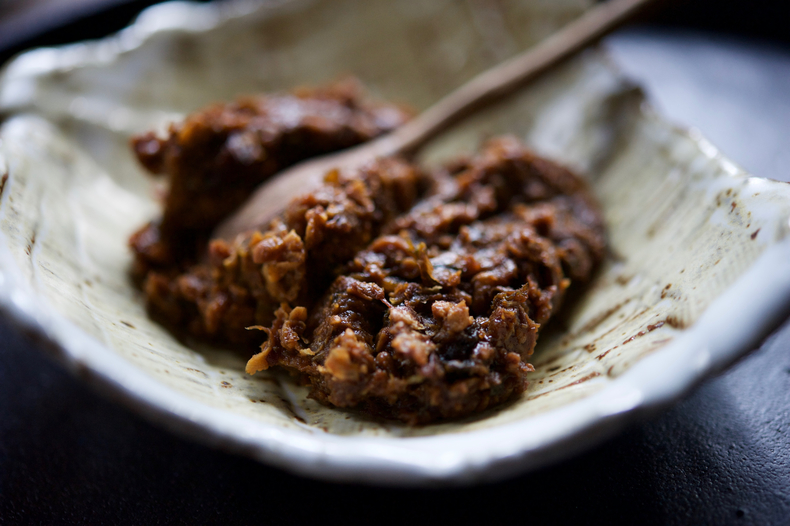
I found this recipe for fukinoto miso spread on slices of poached chicken and I imagine you could come up with all sort of unorthodox ways to enjoy it—with roasted potatoes, tossed with soba noodles, whisked into salad dressing. It is a satisfying flavor bomb with complex layers of salty, bitter, sweet and savory.
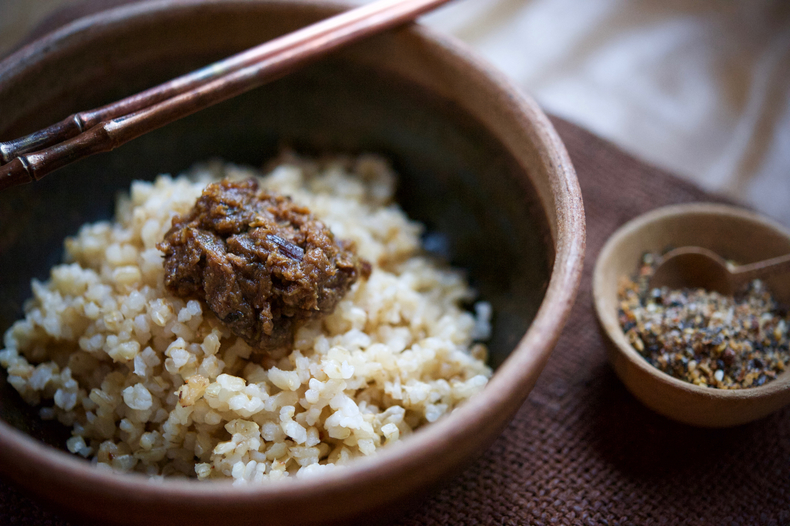
I went the classic route and ate mine with some nutty brown rice. It did not have the familiar flavors I crave and find in nettles or asparagus or fiddleheads. But it tasted of the earth and held the promise of spring...just on the other side of this storm...
Butterbur (Fukinoto) Miso
makes about 1 cup
- — 1 cup pungent red miso
- — 2 tablespoons sake
- — 3 tablespoons sugar
- — 1 tablespoon water
- — 8-10 large butterbur buds (or 12-15 small ones)
- — 1 teaspoon toasted sesame oil
- — 1 tablespoon water
Combine miso, sake, sugar and water in a small, sturdy saucepan. Stir to combine before placing the pan on the stove. Cook over low heat, stirring, until the sugar melts and the sauce becomes glossy and thick. Set aside.
Rinse the buds to remove any soil or sand. Mince them quickly and immediately soak in a bowl of cold water. Place a lid or plate on top to keep the buds submerged and let them soak for 2 minutes. Drain and gently squeeze out excess moisture. Discard the soaking water.
Heat a small heavy skillet over medium-high heat. Add the sesame oil and swirl to coat the pan. Stir-fry the minced buds for 1 minute until wilted and aromatic. Stir in the miso sauce. Add a tablespoon of water and cook for one minute to meld the flavors.
The final sauce should be thick like tomato paste. Let the fukinoto miso cool before storing in a glass jar with a tight-fitting lid. It will keep in the fridge for 2 months.
 Download Recipe
Download Recipe






10 Comments